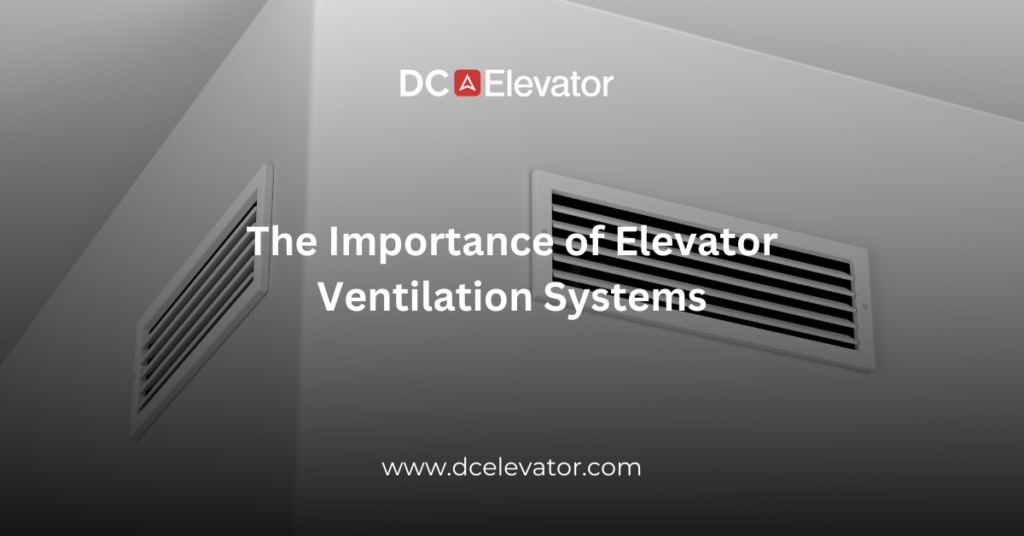Elevators are a crucial part of modern buildings, providing quick and convenient vertical transportation. However, the comfort and safety of passengers are heavily dependent on proper ventilation. In this blog post, we’ll explore the importance of elevator ventilation systems, how they work, and why they are essential for a pleasant and safe ride.
Why Elevator Ventilation Matters
Proper ventilation in elevators is vital for several reasons:
- Passenger Comfort: Good air circulation prevents the elevator from becoming stuffy, ensuring a comfortable ride for passengers.
- Air Quality: Proper ventilation helps maintain good air quality, reducing the accumulation of odors and potentially harmful airborne particles.
- Temperature Control: Ventilation systems help regulate the temperature inside the elevator, preventing it from becoming too hot or too cold.
- Safety: Adequate ventilation is essential in case of emergencies, such as power outages, where passengers might be trapped for an extended period.
How Elevator Ventilation Systems Work
Elevator ventilation systems are designed to circulate fresh air and expel stale air, ensuring a continuous flow of air inside the cabin. Here are the main components and how they function:
1. Ventilation Fans
Most elevators are equipped with ventilation fans located at the top or bottom of the cabin. These fans draw in fresh air from outside the elevator shaft and expel stale air, maintaining a constant flow of air.
2. Air Vents
Air vents are strategically placed within the elevator cabin to facilitate air movement. These vents allow fresh air to enter and circulate throughout the cabin while letting stale air escape.
3. Filters
Filters are often installed in ventilation systems to trap dust, pollen, and other airborne particles. This ensures that the air circulating inside the elevator is clean and free from contaminants.
4. Temperature Sensors
Some advanced ventilation systems are equipped with temperature sensors that monitor the cabin’s temperature. These sensors can trigger the ventilation system to adjust the airflow to maintain a comfortable temperature.
Benefits of Proper Elevator Ventilation
1. Enhanced Comfort
A well-ventilated elevator provides a comfortable environment for passengers by ensuring a steady flow of fresh air and maintaining a pleasant temperature. This is especially important in high-rise buildings where elevator rides can be longer.
2. Improved Air Quality
Proper ventilation helps improve the air quality inside the elevator by removing odors and reducing the concentration of airborne particles. This creates a healthier environment for passengers.
3. Increased Safety
In the event of an emergency, such as a power outage, a well-ventilated elevator ensures that passengers have access to fresh air. This can be critical if passengers are trapped inside for an extended period.
4. Compliance with Regulations
Many building codes and regulations require elevators to have adequate ventilation systems. Ensuring proper ventilation helps building owners comply with these standards and avoid potential fines or penalties.
Maintaining Elevator Ventilation Systems
Regular maintenance of elevator ventilation systems is essential to ensure they function effectively. Here are some maintenance tips:
- Regular Inspections: Conduct routine inspections to check the condition of ventilation fans, air vents, and filters.
- Cleaning: Regularly clean the fans, vents, and filters to prevent the buildup of dust and debris.
- Repairs: Promptly address any issues, such as malfunctioning fans or blocked vents, to ensure the system operates efficiently.
Conclusion
Elevator ventilation systems play a critical role in ensuring passenger comfort, maintaining air quality, and enhancing safety. By investing in proper ventilation and regular maintenance, building owners can provide a better experience for elevator users and comply with safety regulations. Proper ventilation is not just a luxury but a necessity for modern elevator systems.
